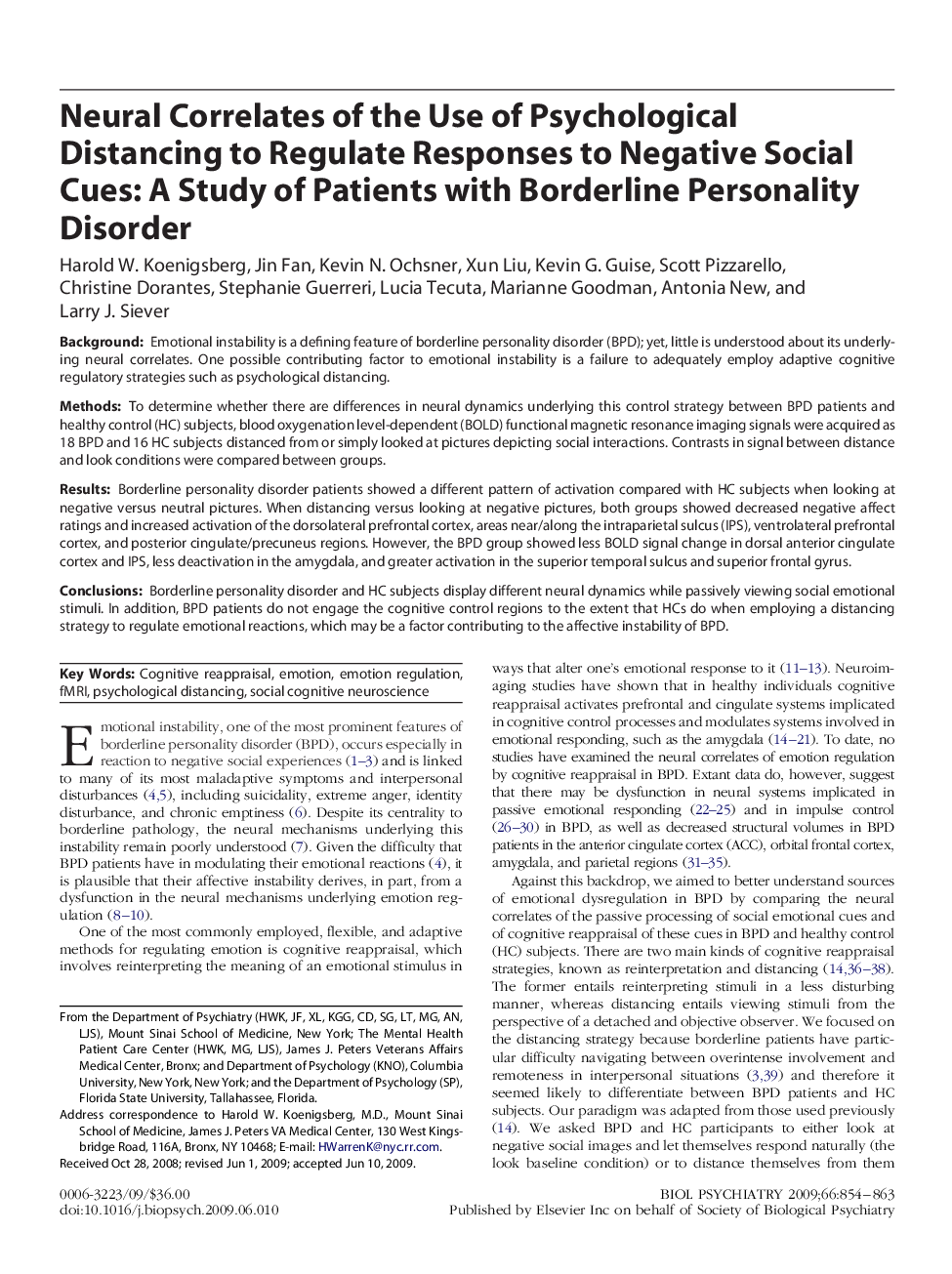| کد مقاله | کد نشریه | سال انتشار | مقاله انگلیسی | نسخه تمام متن |
|---|---|---|---|---|
| 4178804 | 1276515 | 2009 | 10 صفحه PDF | دانلود رایگان |

BackgroundEmotional instability is a defining feature of borderline personality disorder (BPD); yet, little is understood about its underlying neural correlates. One possible contributing factor to emotional instability is a failure to adequately employ adaptive cognitive regulatory strategies such as psychological distancing.MethodsTo determine whether there are differences in neural dynamics underlying this control strategy between BPD patients and healthy control (HC) subjects, blood oxygenation level-dependent (BOLD) functional magnetic resonance imaging signals were acquired as 18 BPD and 16 HC subjects distanced from or simply looked at pictures depicting social interactions. Contrasts in signal between distance and look conditions were compared between groups.ResultsBorderline personality disorder patients showed a different pattern of activation compared with HC subjects when looking at negative versus neutral pictures. When distancing versus looking at negative pictures, both groups showed decreased negative affect ratings and increased activation of the dorsolateral prefrontal cortex, areas near/along the intraparietal sulcus (IPS), ventrolateral prefrontal cortex, and posterior cingulate/precuneus regions. However, the BPD group showed less BOLD signal change in dorsal anterior cingulate cortex and IPS, less deactivation in the amygdala, and greater activation in the superior temporal sulcus and superior frontal gyrus.ConclusionsBorderline personality disorder and HC subjects display different neural dynamics while passively viewing social emotional stimuli. In addition, BPD patients do not engage the cognitive control regions to the extent that HCs do when employing a distancing strategy to regulate emotional reactions, which may be a factor contributing to the affective instability of BPD.
Journal: Biological Psychiatry - Volume 66, Issue 9, 1 November 2009, Pages 854–863